A block of mass m slides along a frictionless surfce as shown in the figure. If it is releases from rest t A what is its speed at B?
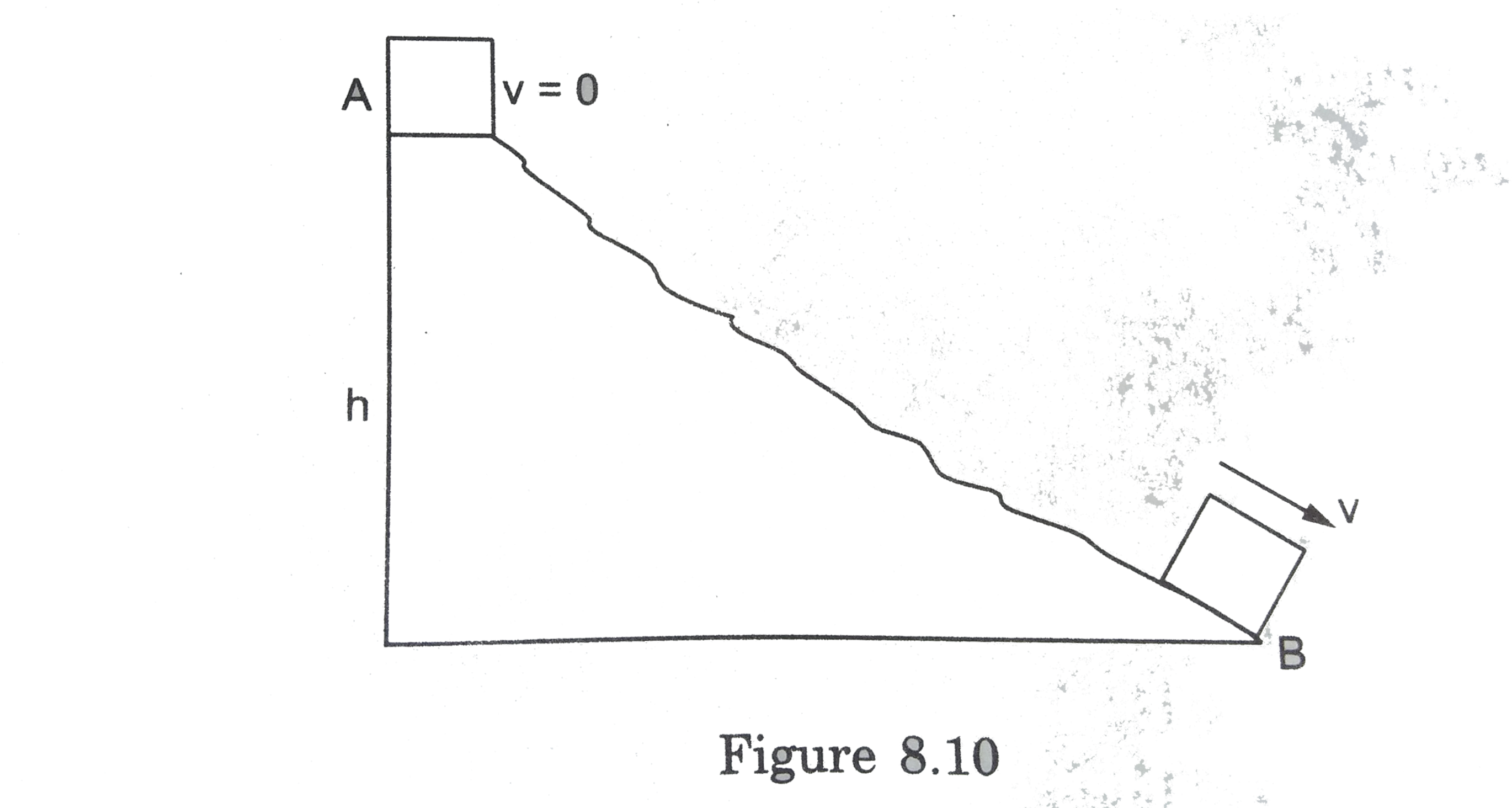
Take the block+ the earth as th system. Only the block moves, so only the work done on the block will contribute to the gravitatioN/A potential energy. As it descends through a height h between A and B, the potential energy decreses by mgh. The normal contact force N on the block by the surface does no work as it is perpendicular to its velocity. No exterN/Al force does any work on the system. Hence,
increase is kinetic energy = decrease in potential energy
or,12mv2=mghor,v=√2gh
Topper's Solved these Questions
Similar Questions
A small block of mass m slides along a smooth frictional track as shown in the figure. If it starts from rest at P, what is the resultant force acting on it at Q?
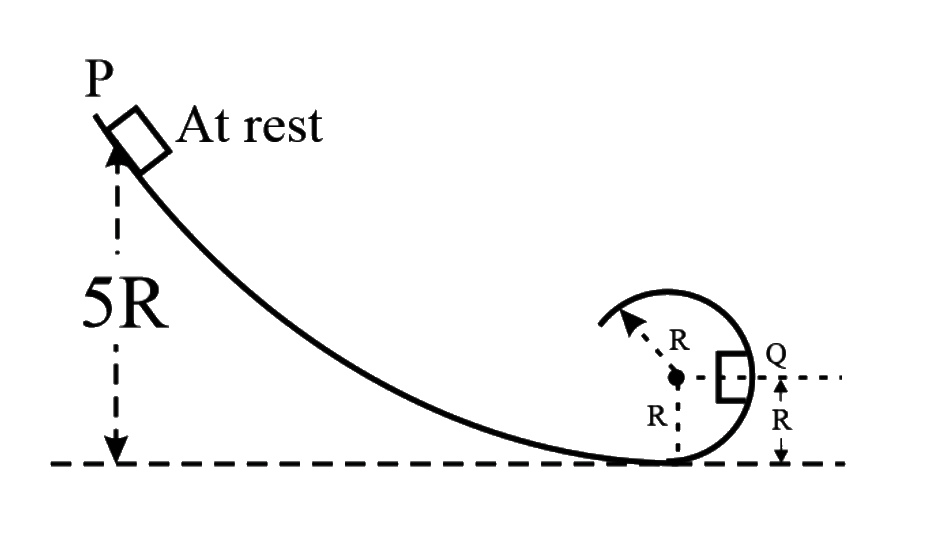 View Solution
View SolutionA small block of mass m slides along a smooth frictionless track as shown.
(a) If it starts from rest at P, what is the resultant force acting on it at Q?
(b) At what height above the bottom should the block be released so that the force it exerts against the track at the top of the loop equals its weight?
 View Solution
View Solution
Knowledge Check
- Question 1 - Select One
A block of mass 2 m is pulled along a horizontal frictionless surface by a rope of mass m as shown in the figure given. What force is exerted by the rope on the block ?
 AF3BF2C2F3DF
AF3BF2C2F3DF - Question 2 - Select One
A block of mass 'm' is released on the top of a frictionless incline as shown in the figure. The time period of the oscillation of the block is
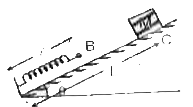 A2π√mK+√2LsinθgB2π√mK+√2(L−l)gsinθC2π√(L−l)gsinθ+√mKDnone of these
A2π√mK+√2LsinθgB2π√mK+√2(L−l)gsinθC2π√(L−l)gsinθ+√mKDnone of these - Question 3 - Select One
A small block of mass M moves on a frictionless surface of an inclined plane, as shown in the figure. The angle of the incline suddenly changes from 60∘ to 30∘ at point B. The block is many at rest at A. Assume that collisions between the block id the incline are totally inelastic.
The speed of the block at point C, immediately before it leaves the second incline
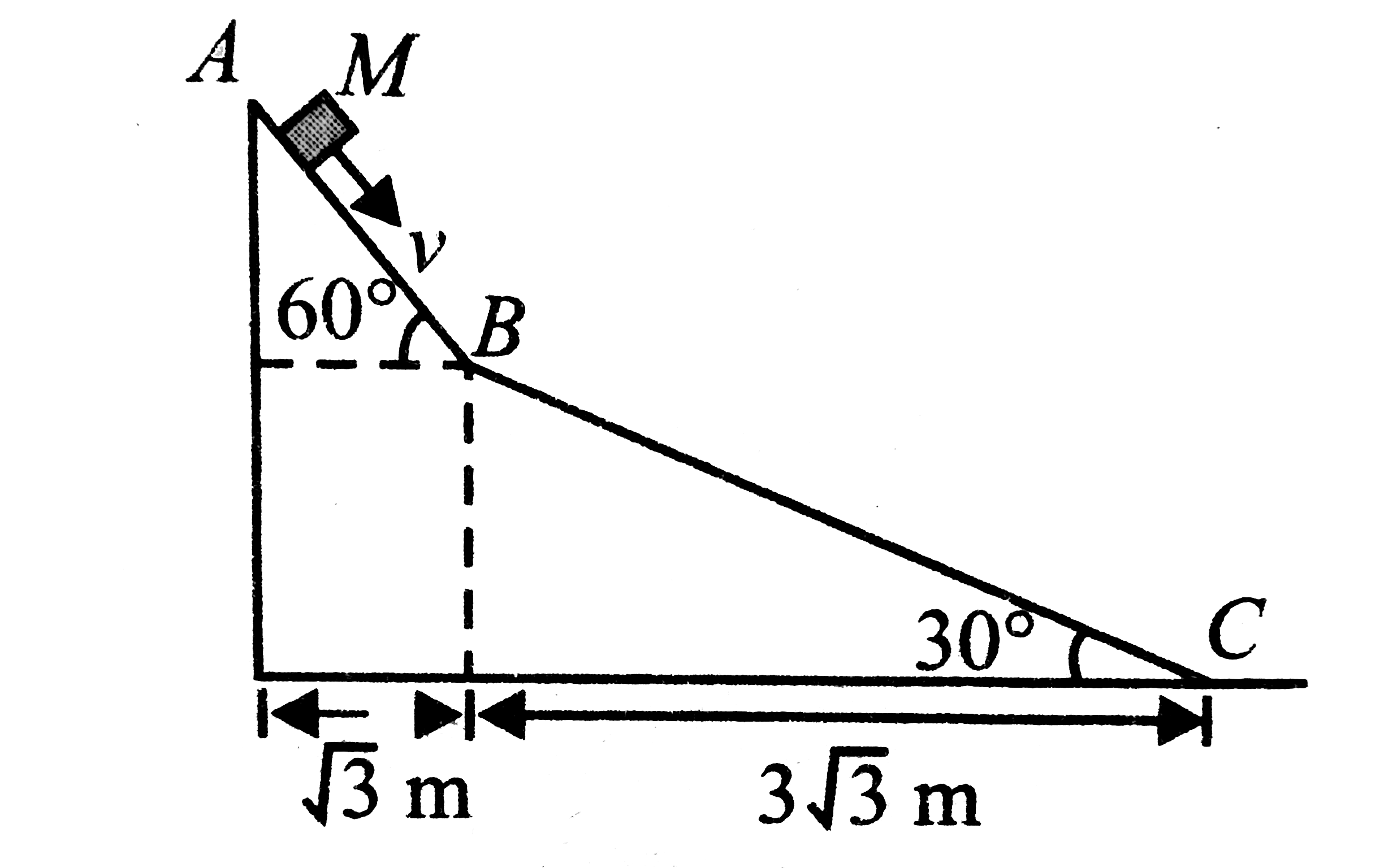 A√120m/sB√105m/sC√90m/sD√75m/s
A√120m/sB√105m/sC√90m/sD√75m/s
A small block of mass m slides along a smooth track, as shown in fig. (i) If it starts from rest at P, what is the resulting force acting on it at Q ? (ii) at what height above the bottom of the loop should the block be released so that the force it exerts against the track at the top of the loop equals its weight?
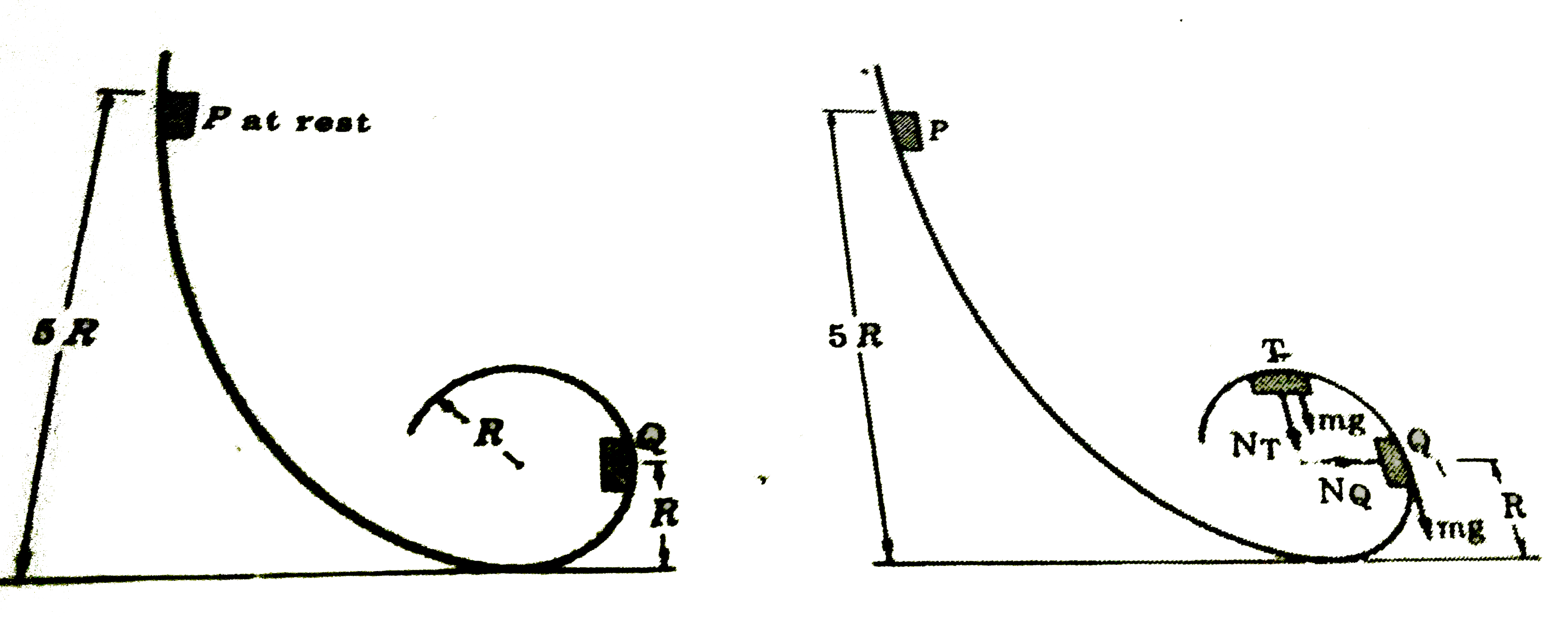 View Solution
View SolutionA block shown in figure -3.12 slides on a semicircular frictionless track. If it starts from rest at position A, what is its speed at the point marked B ? Take g=10m/s2
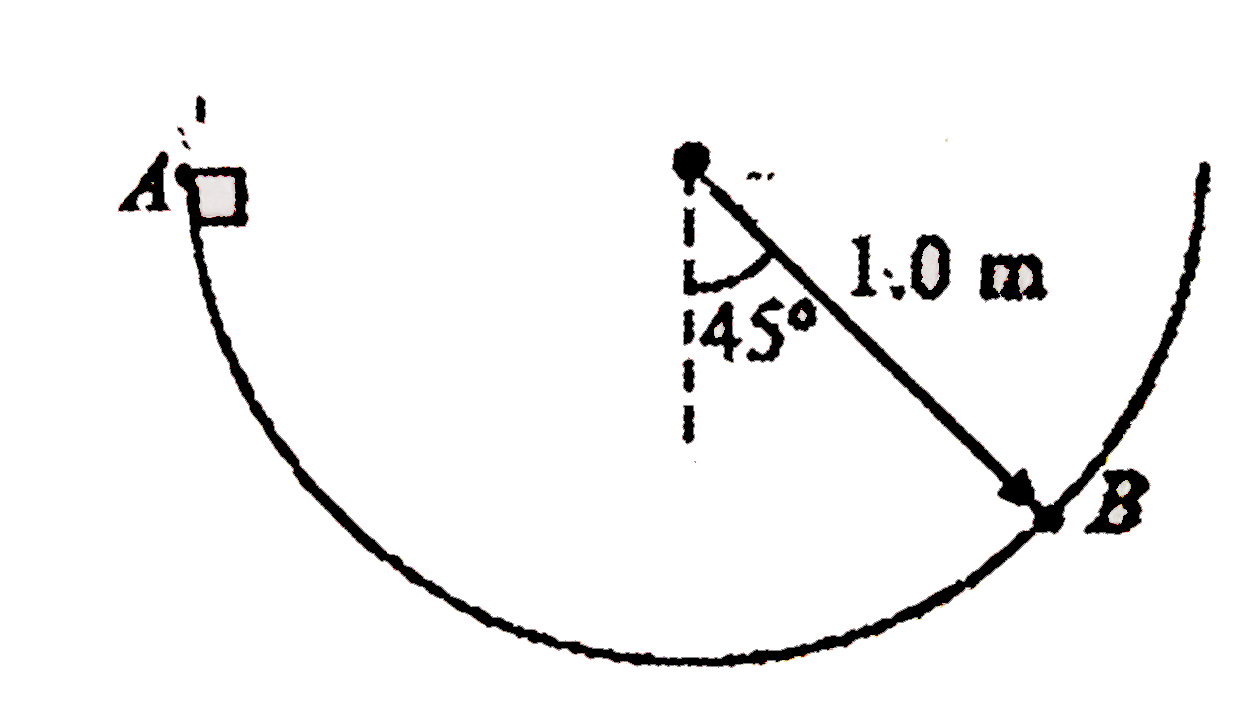 View Solution
View SolutionA block of mass M slides along the sides of a pot as shown in the Figure.The walls of the pot are frictionless and the base PQ has coefficient of friction 0.2 .If the block is released from the top of the side,which is 15cm high,where will the block come to rest? Given that the length of the base PQ is 30cm.
View Solution
A block of mass 2 m is pulled along a horizontal frictionless surface by a rope of mass m as shown in the figure given above. What force is exerted by the rope on the block ?View SolutionA 10 kg block is pulled in the vertical plane along a frictionless surface in the form of an arc of a circle of radius 10m. The applied force is 200N as shown in the figure. If the block started from rest at A, the velocity at B would be:
 View Solution
View Solution

